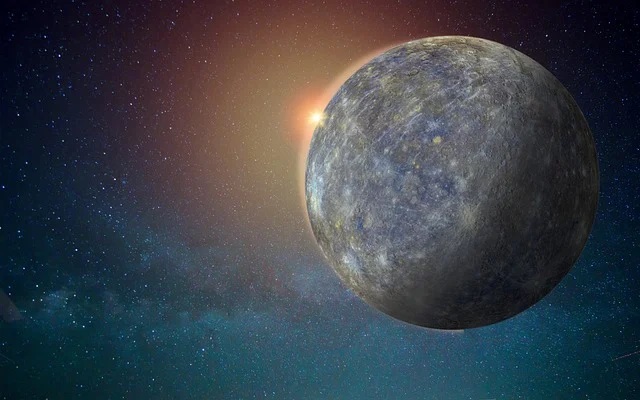This is the first time that ‘whistling’ sound waves have been discovered emanating from Mercury’s magnetic field, despite the fact that similar chorus waves have been spotted at Uranus and Neptune, as well as recorded on Earth, Jupiter, and Saturn.
For the first time, researchers claim to have found and captured enigmatic “singing” plasma waves surrounding the planet Mercury.
Astronomer Mitsunori Ozaki of Kanazawa University and a group of other scientists from France and Japan made the discovery of this phenomenon.
This is the first time that “whistling” sound waves have been discovered emanating from Mercury’s magnetic field, despite the fact that similar chorus waves have been spotted at Uranus and Neptune, as well as recorded on Earth, Jupiter, and Saturn.
The fact that Mercury lacks a significant magnetic field compared to other planets makes this discovery intriguing.
Researchers provide light on a recent finding
In essence, Mercury is a large rock with a negligible atmosphere. Due to its close orbit, the planet is continuously hit by solar radiation and wind.
A few other features that Mercury lacks are persistent radiation belts, which are formed when solar particles get caught in a planet’s magnetic field, and a dense, lush atmosphere.
The results, according to researchers, may provide some insight into Mercury’s magnetic environment as well as how the solar wind shapes planetary magnetic fields generally.
This year, despite Mercury’s nonexistent magnetic field and atmosphere, scientists were able to find evidence of its unique sort of auroras.
Due to the small number of space missions devoted to researching Mercury, there is a dearth of information about the planet.
Little understanding of Mercury
It wasn’t until the Mariner 10 space probe was deployed to study the planet in the 1970s that its magnetic field was identified.
But with the 2018 launch of the Mercury BepiColombo mission, scientists are now attempting to make up for the paucity of knowledge. It is home to the MIO instrument, which is used to study the Mercurian magnetosphere.
Due to the force of the Sun, the sensor is not fully in orbit yet, but in 2021 and 2022 it made flybys of Mercury and took observations of the planet’s magnetic field.
Around that time, whistler-mode waves were amply demonstrated by researchers in Mercury’s magnetosphere.
“To date, we still do not know whether Earth and Mercury have similar spatiotemporal properties of their electron-driven chorus,” the authors write.
“The present study paves the way for these challenging future investigations that will reveal how magnetized planet environments are shaped by the solar wind in our Solar System, with potential extrapolation to exoplanets and their interactions with stellar winds.”
Nature Astronomy has published the research.




